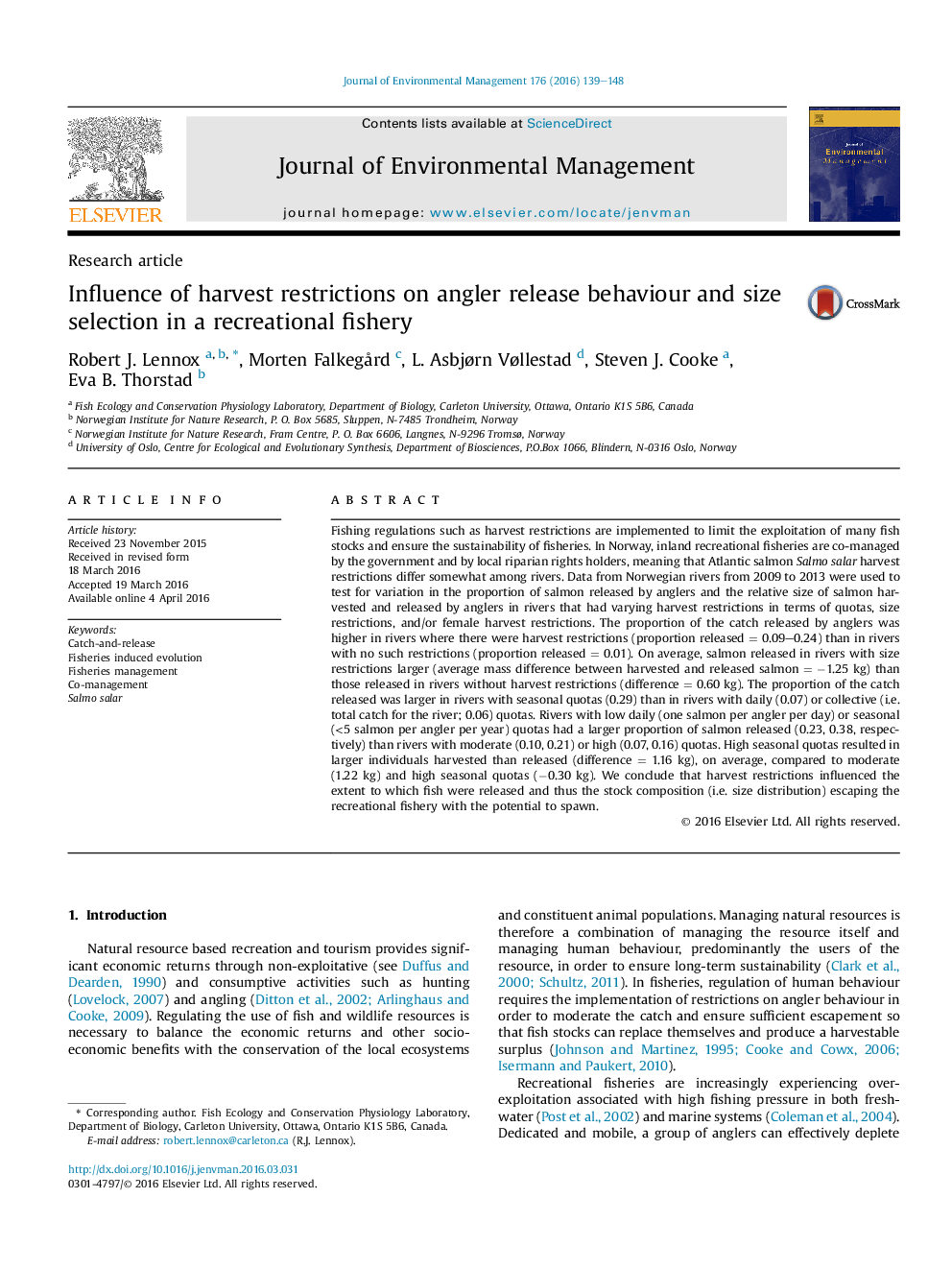| Article ID | Journal | Published Year | Pages | File Type |
|---|---|---|---|---|
| 1055336 | Journal of Environmental Management | 2016 | 10 Pages |
Abstract
Fishing regulations such as harvest restrictions are implemented to limit the exploitation of many fish stocks and ensure the sustainability of fisheries. In Norway, inland recreational fisheries are co-managed by the government and by local riparian rights holders, meaning that Atlantic salmon Salmo salar harvest restrictions differ somewhat among rivers. Data from Norwegian rivers from 2009 to 2013 were used to test for variation in the proportion of salmon released by anglers and the relative size of salmon harvested and released by anglers in rivers that had varying harvest restrictions in terms of quotas, size restrictions, and/or female harvest restrictions. The proportion of the catch released by anglers was higher in rivers where there were harvest restrictions (proportion released = 0.09-0.24) than in rivers with no such restrictions (proportion released = 0.01). On average, salmon released in rivers with size restrictions larger (average mass difference between harvested and released salmon = â1.25 kg) than those released in rivers without harvest restrictions (difference = 0.60 kg). The proportion of the catch released was larger in rivers with seasonal quotas (0.29) than in rivers with daily (0.07) or collective (i.e. total catch for the river; 0.06) quotas. Rivers with low daily (one salmon per angler per day) or seasonal (<5 salmon per angler per year) quotas had a larger proportion of salmon released (0.23, 0.38, respectively) than rivers with moderate (0.10, 0.21) or high (0.07, 0.16) quotas. High seasonal quotas resulted in larger individuals harvested than released (difference = 1.16 kg), on average, compared to moderate (1.22 kg) and high seasonal quotas (â0.30 kg). We conclude that harvest restrictions influenced the extent to which fish were released and thus the stock composition (i.e. size distribution) escaping the recreational fishery with the potential to spawn.
Related Topics
Physical Sciences and Engineering
Energy
Renewable Energy, Sustainability and the Environment
Authors
Robert J. Lennox, Morten Falkegård, L. Asbjørn Vøllestad, Steven J. Cooke, Eva B. Thorstad,
